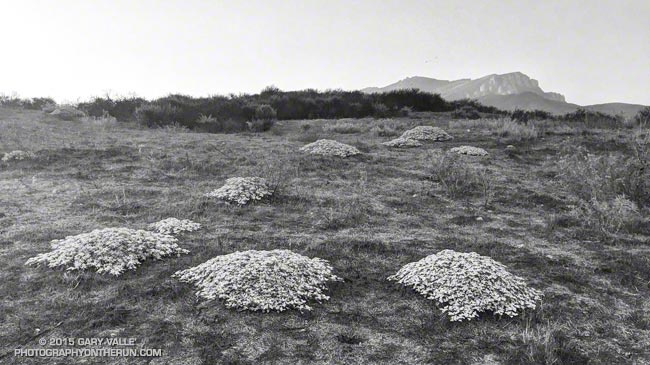
nature, photography, photography|black & white, photography|landscape, photography|quirky, trails, trails|pt mugu state park
home » photography|black & white » Page 5

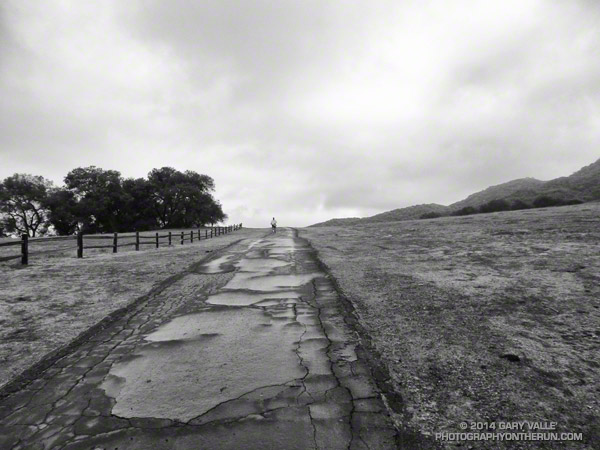
When I turned the corner at the Trippet Ranch parking lot and started up the hill toward the Musch Trail, I did a double take. The road was wet and it looked like it had been raining!
While it wasn’t impossible that a rogue shower had been spawned from the deep layer of moisture flowing over the area, it was far more likely the road was just wet from on-again, off-again drizzle.
On the way over from the end of Reseda one thing is for sure — there had been no rain. The dirt roads and trails had been in great shape. It would have been an exaggeration to describe them as damp. Although cool and cloudy, the weather was excellent for running and I’d removed my sleeves miles ago.
The Trippet Ranch Loop is a favorite. I’d taken the fire roads out from the end of Reseda, now on the way back it would be almost entirely single track trail.
Some related posts: Trippet Ranch Oaks, Trippet Ranch Mule Deer, The Heavenly Ranch in the Hills, Ferns Along the Garapito Trail, Garapito Trail Runs
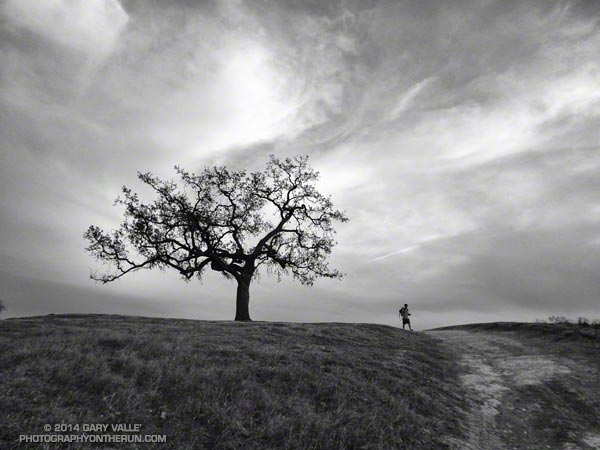
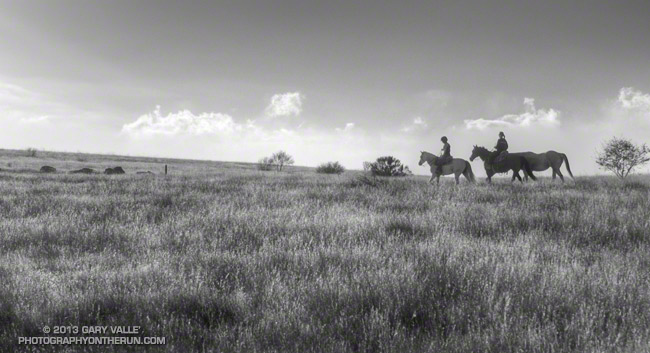
From this evening’s run at Ahmanson Ranch.
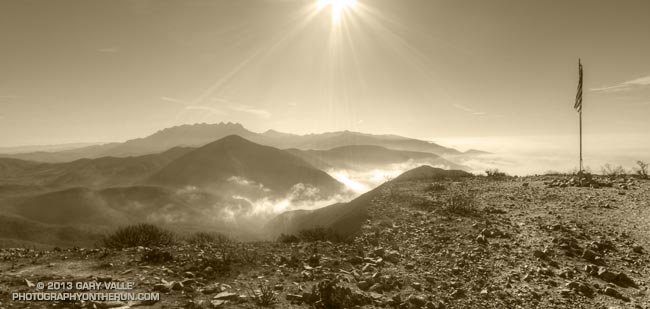
It was humid — Atlanta in the Summer without air conditioning humid. I was sopping wet from head to toe and had just wrung out my high tech shirt like it was a cotton wash rag. Sweat just wasn’t evaporating.
The humidity is often low when it’s hot in Southern California, but not today. I was at the Danielson Multiuse area on my way back to Wendy Drive after doing Mugu Peak in Pt. Mugu State Park. Because of its moderate elevation gain the 21 mile run (round trip) to Mugu Peak is a good one to do back-to-back with another run when training for a longer event. Today’s run was a follow-up to a 20 mile run in the San Gabriel Mountains yesterday.
When I got back home I checked some Remote Automated Weather Stations (RAWS) to see just how humid it was. At the Circle X RAWS at 10:10 am the temperature was 86°F, the dew point 70°F, and the relative humidity 59%. Further inland at the Cheeseboro RAWS at 10:38 am the temperature was 91°F, the “in the sun” temperature was 97°F, and the dew point was 65°F. Those are conditions you might find in Hawaii or the Southeastern U.S. in the summertime.
The NWS uses the Heat Index as a guide for issuing alerts related to heat. In practice runners will find that the Heat Index doesn’t do a very good job because it makes assumptions that don’t necessarily apply to runners — for example that you are in the shade and walking. According to the NWS “exposure to full sunshine can increase heat index values by up to 15°F.”
I’ve found the dew point to be an easy to apply indicator of humidity on hot days. If the air temperature on a run is in the neighborhood of 90°F I start to notice the humidity at a dew point of around 55°F. At a dew point of 60°F the humidity is definitely noticeable, and at a dew point of 65°F and above the humidity is increasingly oppressive.
Some related posts: After the Springs Fire: A Run Through Pt. Mugu State Park, Back on the Backbone Trail, Wendy Drive – Mugu Peak Challenge
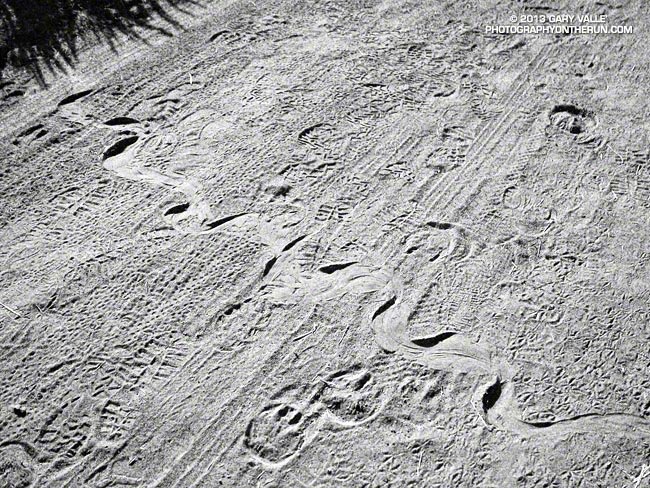
Legend has it that St. Patrick chased all the snakes from Ireland, and while there have been no reports of the 5th Century cleric being sighted at Ahmanson Ranch, I don’t recall a Spring and Summer when I’ve seen so few snakes in the 3,000 acre preserve.
I’ve run at Ahmanson Ranch — now Upper Las Virgenes Canyon Open Space Preserve — more than a decade. I generally run at Ahmanson a few times a week and have become very familiar with the area’s plants and wildlife.
So far this year I’ve seen no mature rattlesnakes and only one gopher snake at Ahmanson. I’ve seen a couple of baby rattlesnakes and a handful of tracks, but that’s it. In some years I’ve counted more than a dozen snake tracks during one 7 mile run.
The reduction in the snake population is likely related to back-to back years with low rainfall. This year Downtown Los Angeles has recorded only 2.72 inches of rain since January 1. That’s a deficit of nearly 8 inches and about 25% of the normal amount of rainfall.
The reduced rainfall not only reduces the population of rodents, reptiles and other prey animals sought by snakes, but also increases the likelihood snakes will be preyed upon by animals higher on the food chain. Snakes, including rattlesnakes, are eaten by a long list of birds and mammals, and may also be preyed upon by other snakes. Humans also kill a large number of snakes.
The title photograph is the track of a Southern Pacific rattlesnake. The snake was moving from the upper left of the photo to the lower right.
Some related posts: Big Southern Pacific Rattlesnake at Ahmanson Ranch, Southern Pacific Rattlesnake